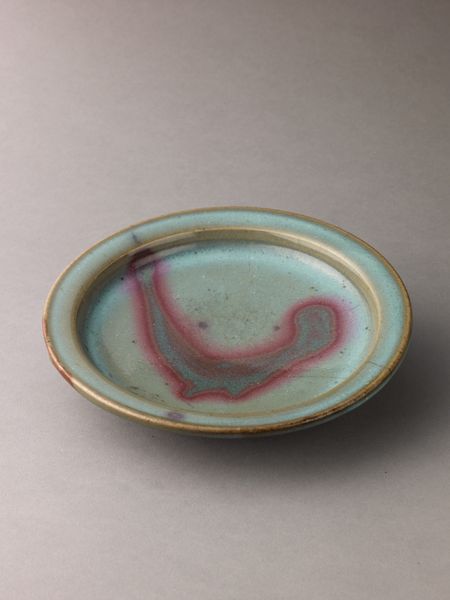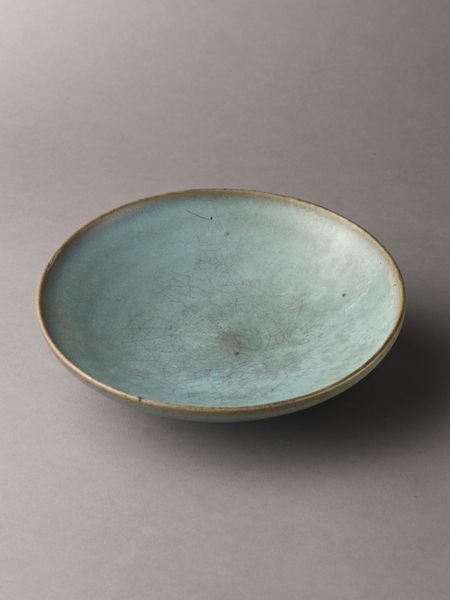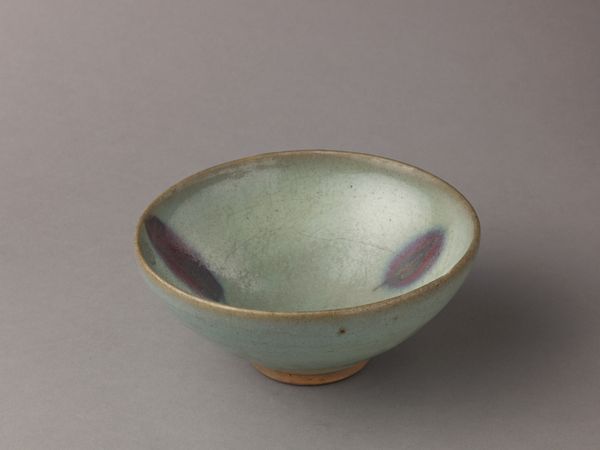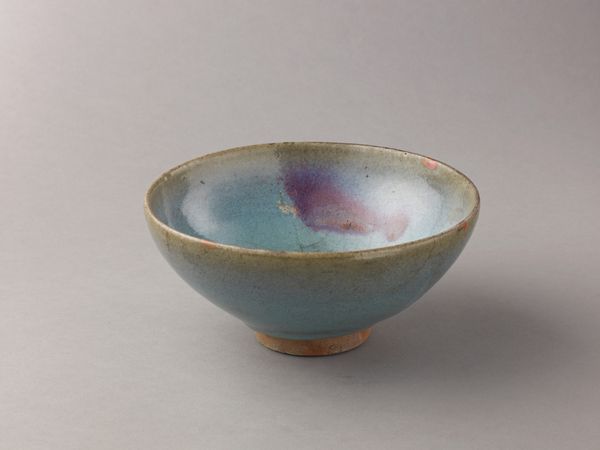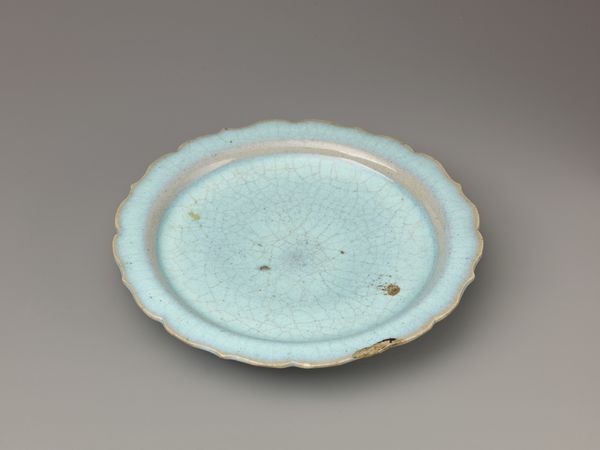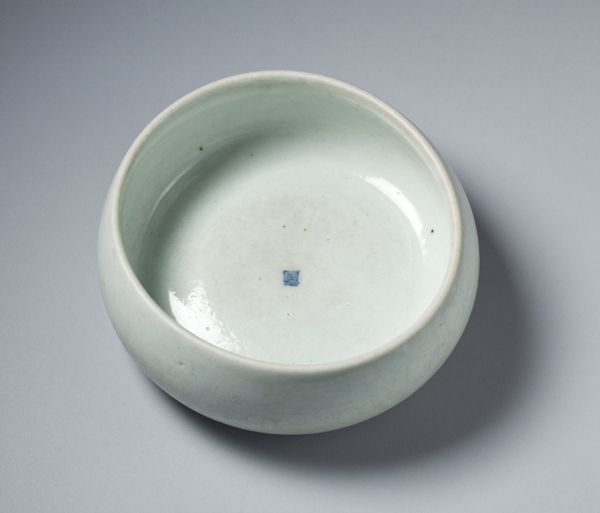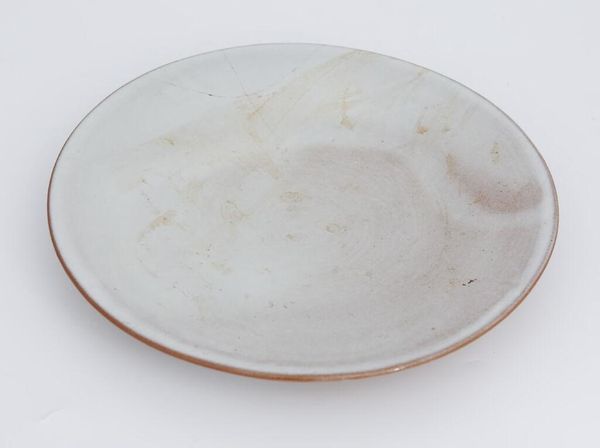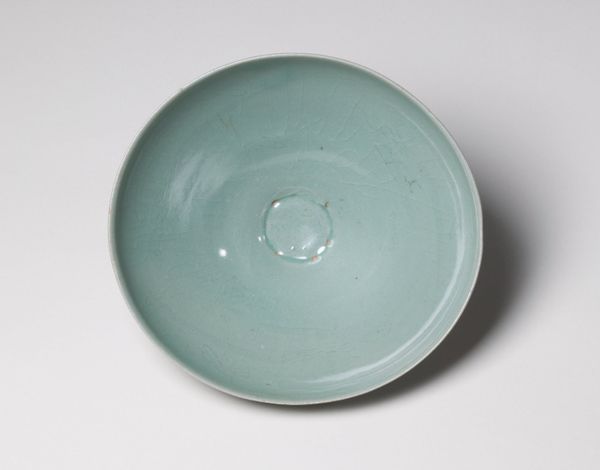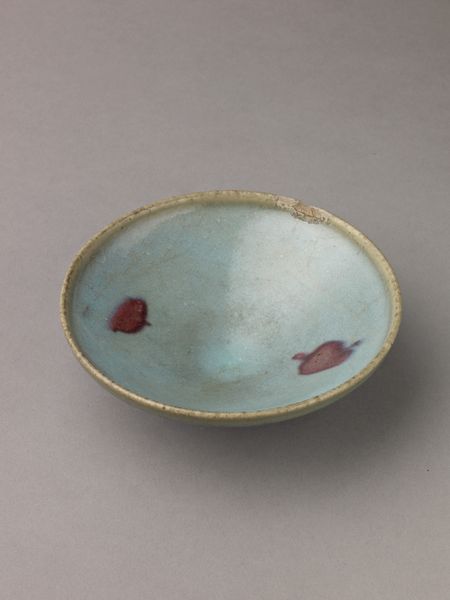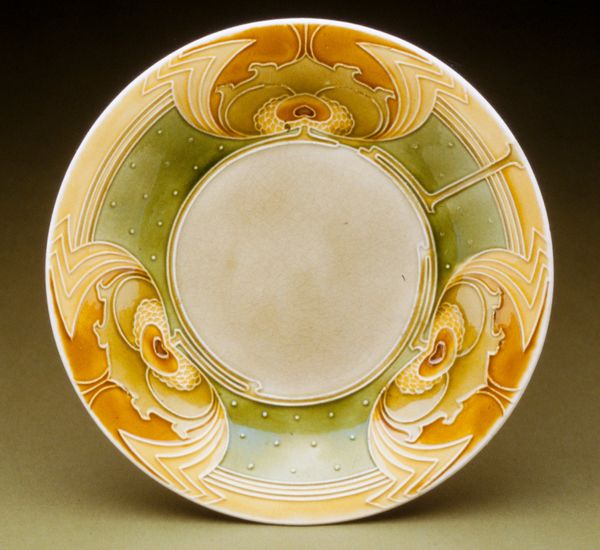
ceramic
#
asian-art
#
ceramic
#
abstraction
Dimensions: Diameter: 7 in. (17.7cm)
Copyright: Public Domain
Curator: Today, we are examining a piece of Jun ware: a plate, dating from between 1100 and 1300. This ceramic work, made in China, now resides at the Metropolitan Museum of Art. Editor: It's strikingly minimal, isn't it? The almost ethereal celadon glaze offset by that splash of purplish-red…It feels incredibly peaceful, yet with a hint of dynamic tension. Curator: Indeed. The tension stems in part from the volatile kiln environment where the reduction firing allowed the iron oxide to develop into the blues, and the copper in the glaze gives rise to those gorgeous splashes of crimson and purple. Imagine the degree of control and craft that's necessary! Editor: The colorations really evoke thoughts of twilight skies. The red almost reads as a sunset bleeding into a twilight blue, and then, metaphorically, we consume these images by eating from the plate. It is a rather romantic notion. Curator: I find that it’s precisely this blend of natural occurrence and the craftsman's intention, with the social demand for the luxury wares that makes this plate significant. Potters strategically layered glaze, predicting its movement and transformation during the firing process. Each piece represents an attempt, controlled by their labor, that leads to surprising results. Editor: It seems to me that Chinese society, deeply connected with nature through philosophy and religion, wanted this reflected even in the mundane—elevating utilitarian objects to emblems of a worldview, and using them daily to create personal meditative spaces. Curator: Precisely! That intersection where belief is brought into practical production: it is also where aesthetic appeal can come into functional purpose, and where craft begins to express symbolic ideals. Editor: Looking at it now, I see beyond the practical and beyond the skill: a beautiful artifact holding within it not only artistic labor but something like cultural memory. Curator: Exactly, by looking at what material conditions allowed us to get here, and understanding where ideas began.
Comments
No comments
Be the first to comment and join the conversation on the ultimate creative platform.
